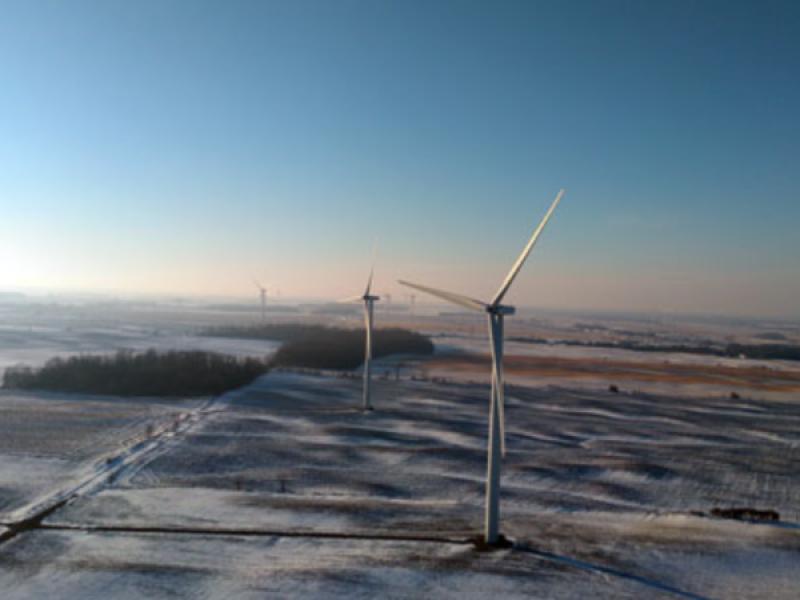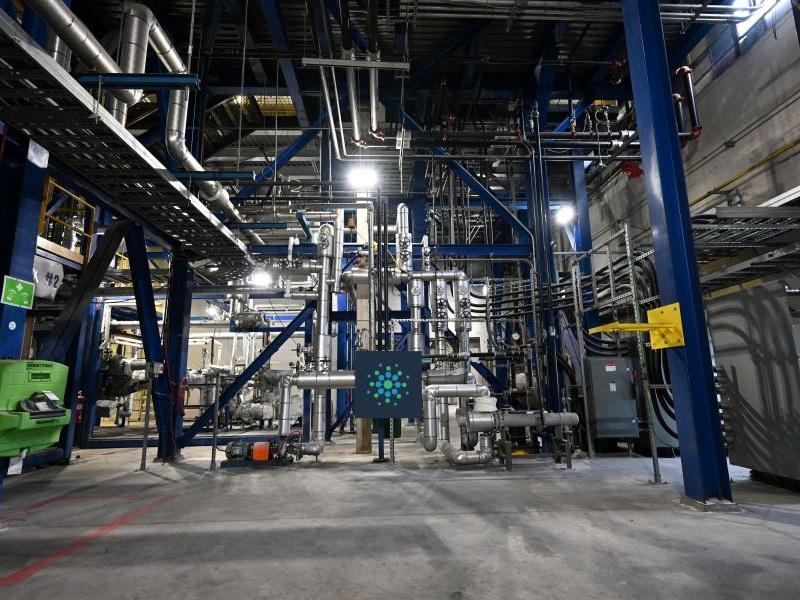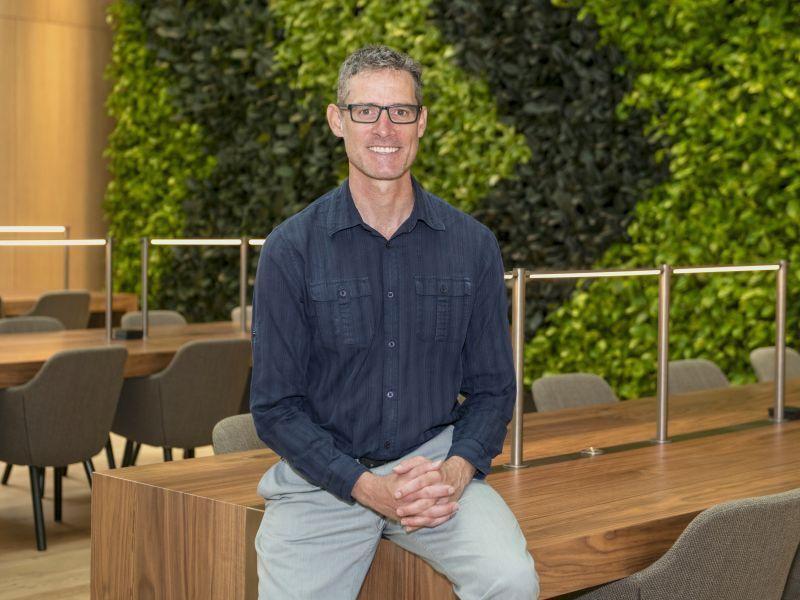
Colliers’ 2021 sustainability and impact report. (Courtesy Colliers)
Colliers, one of the world’s leading institutional investment and property management firms, is actively engaged in transforming its properties into lean, green, low-emission machines for living and working.
As the manager of nearly two billion square feet of real estate around the world, Toronto-based Colliers has committed to being a powerful player in changing the way buildings consume energy and how much CO₂ they emit.
Many people would be surprised to learn that buildings and construction account for nearly 40 per cent of global carbon emissions. This is why companies such as the Canadian corporate giant, and others responsible for managing the built environment, can play a critical role in reducing our carbon footprint and helping the world achieve the Paris Agreement’s 45 per cent emissions reduction target by 2030, and the greater goal of net-zero emissions by 2050.
On May 31, Colliers released its 2021 Global Impact Report that reflects its commitment to “delivering resilient buildings, inclusive workplaces, and green spaces that promote community health and wellbeing.” The report lays out its ESG strategy, which provides a comprehensive framework for transitioning its buildings under management toward a carbon-neutral future.
“The world’s major challenges require a bold response from businesses – and we have an important role to play. Our 2021 Global Impact Report articulates the ambitious actions we are taking, the substantial progress we have made on our ESG journey over the last year, and how we will continue to push ourselves to accelerate where we can make a difference,” said Jay Hennick, global chairman and CEO of Colliers, in a prepared statement.
“Doing what’s right is how we operate at Colliers. As we look to the future, we will positively impact our changing world by (paying) thoughtful attention to ESG and living our purpose – maximizing the potential of property and real assets.”
Elevate the Built Environment ESG strategy
As part of its “Elevate the Built Environment” programme, Colliers is enabling its clients to decarbonize their properties by introducing more accurate measurement systems and adopting new technologies. This strategy addresses the growing effort of the global corporate and fund management community to persuade suppliers and customers to shrink their carbon footprints.
In October, Colliers appointed Sean Drygas as global lead, ESG and impact, to spearhead its ambitious corporate mission.
“Our strategy and targets are grounded in our belief that the built environment can make a positive impact on people’s lives,” Drygas told SustainableBiz.
“We are doing more every day to weave ESG into the fabric of our organization and unify our efforts to make our clients’ workplaces – and our own – more sustainable, inclusive and healthy.”
Using data to avoid greenwashing
According to Drygas, the key to avoiding “greenwashing” (i.e. corporations making exaggerated or false claims regarding their sustainability efforts) and achieving real progress in reducing carbon emissions is obtaining reliable energy consumption data and using artificial intelligence to create “smart” buildings.
This has led Colliers to partner with Measurabl – an ESG data management company – to provide advanced reporting and benchmarking capabilities.
Drygas pointed out obtaining reliable and useful data has long been the most thorny issue in the commercial real estate sector.
“Historically there’s a split between sharing of information between landlords and tenants. Normally it’s the landlord which gets the whole bill for the building and they’re just including the electricity or gas charge within the overall operating cost of the building . . . Then the other challenge is that you usually don’t have each floor of the building with its own data stream.
“Typically you only have one data stream for the entire building and you’re just given a proportionate share of that.”
Colliers onboarded 70 buildings to the Measurabl platform in 2021 and will expand its use of the advanced data collection service to enable Colliers’ operational teams make “smart, data-driven decisions and key building investment recommendations that add significant value for clients.”
“We’re created, for our clients, a net-zero road map that starts with accurate baseline measurements that will help landlords better manage their energy consumption,” Drygas said. “The biggest use of energy in most buildings today is heating, ventilation and air conditioning (HVAC). We’re showing our clients how AI can improve the efficiency and control of existing HVAC systems.”
Lighting is another major energy consumption component. Most buildings under Colliers’ management have already switched from fluorescent to LED lighting, but Drygas believes AI offers a far greater energy savings potential.
“AI has already demonstrated its benefits and there will be more energy savings that come with the machine-learning aspect of AI. AI runs existing building management systems in a more intelligent way and reduces energy consumption anywhere from 25 to 45 per cent . . . So that’s really promising.”
Roadblocks to carbon neutrality in the built environment
Converting inefficient properties into smart, environmentally friendly buildings only addresses half of the total carbon emissions produced by existing real estate and infrastructure. The other half derives from the materials – concrete, steel, and glass – used during construction.
Drygas believes Canada has ample potential to pave the way in the usage of more environmentally friendly materials and construction techniques.
“We’re now starting to see some interesting innovation in that space. The Limberlost Place project on the waterfront in Toronto (at George Brown College) is emblematic of the new mass-timber construction technology. It’s a 10-storey building that uses wood as the key structural material. But that technology doesn’t work beyond a certain height.
“For taller buildings, you’ve got to get the CO₂ out of the concrete construction process. There are new technologies out there which accomplish that and CarbonCure (a Halifax-based company) is a world leader in this field. They’ve developed a process that captures the CO₂ that is a byproduct of manufacturing concrete and recycles that into new concrete.”
“If we’re going to make a dent in that 40 per cent carbon footprint we need to construct buildings that don’t have a massive embedded carbon footprint to begin with. And with respect to steel-intensive [buildings], we need to use electricity rather than coal to produce steel.”
Drygas pointed to the construction by Algoma Steel of a new $700 million steel plant in Sault Ste. Marie which uses “innovative electric arc technology which shifts from coal to electricity to produce steel” and when completed will reduce carbon emissions by 70 per cent compared to traditional steel plant operations.
Said Drygas: “To get to the Paris net-zero commitment by 2050, we need to stop using gas to heat the air and the water. We need to get to a world with fully electric buildings – that’s the critical piece of the solution.”










